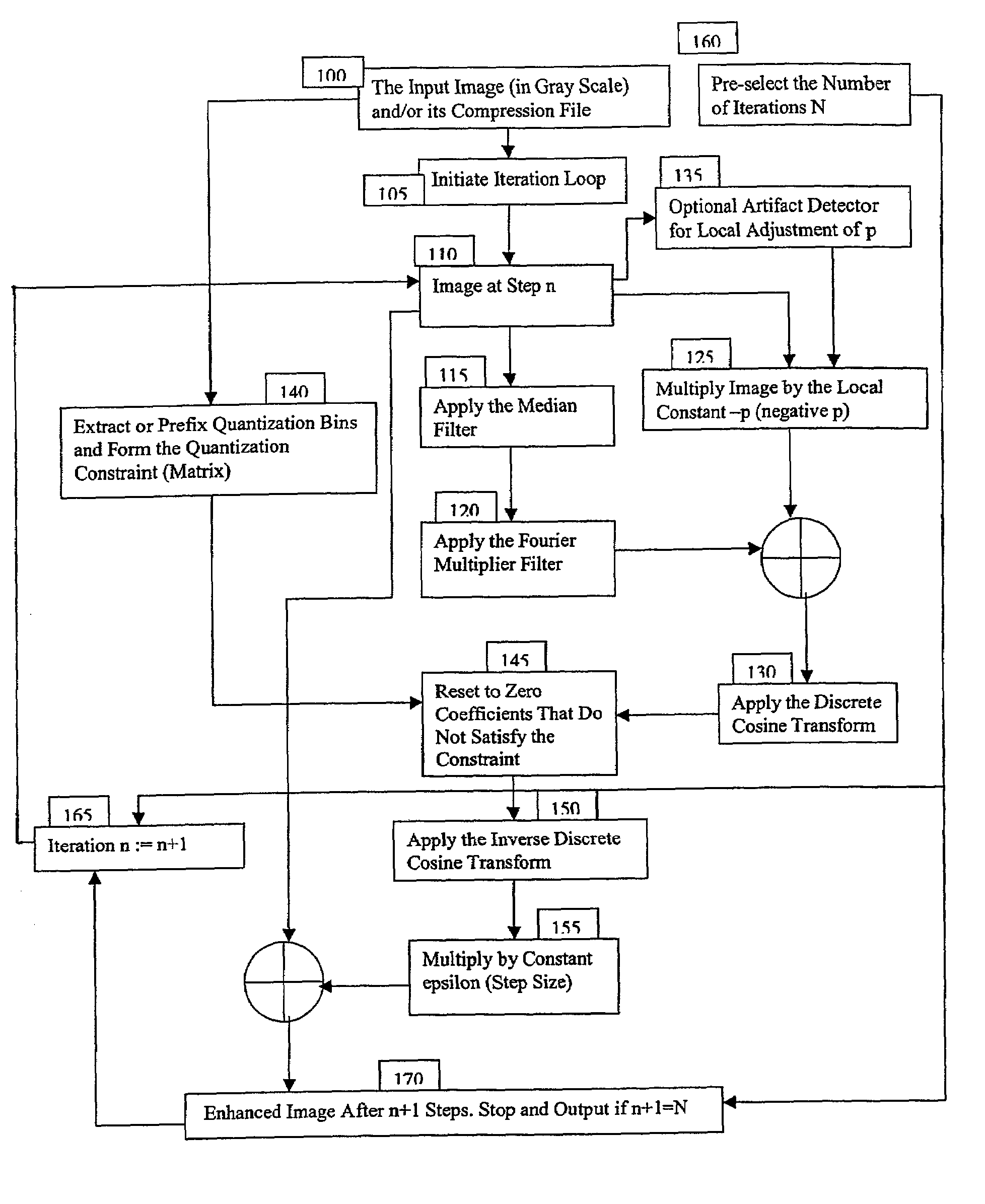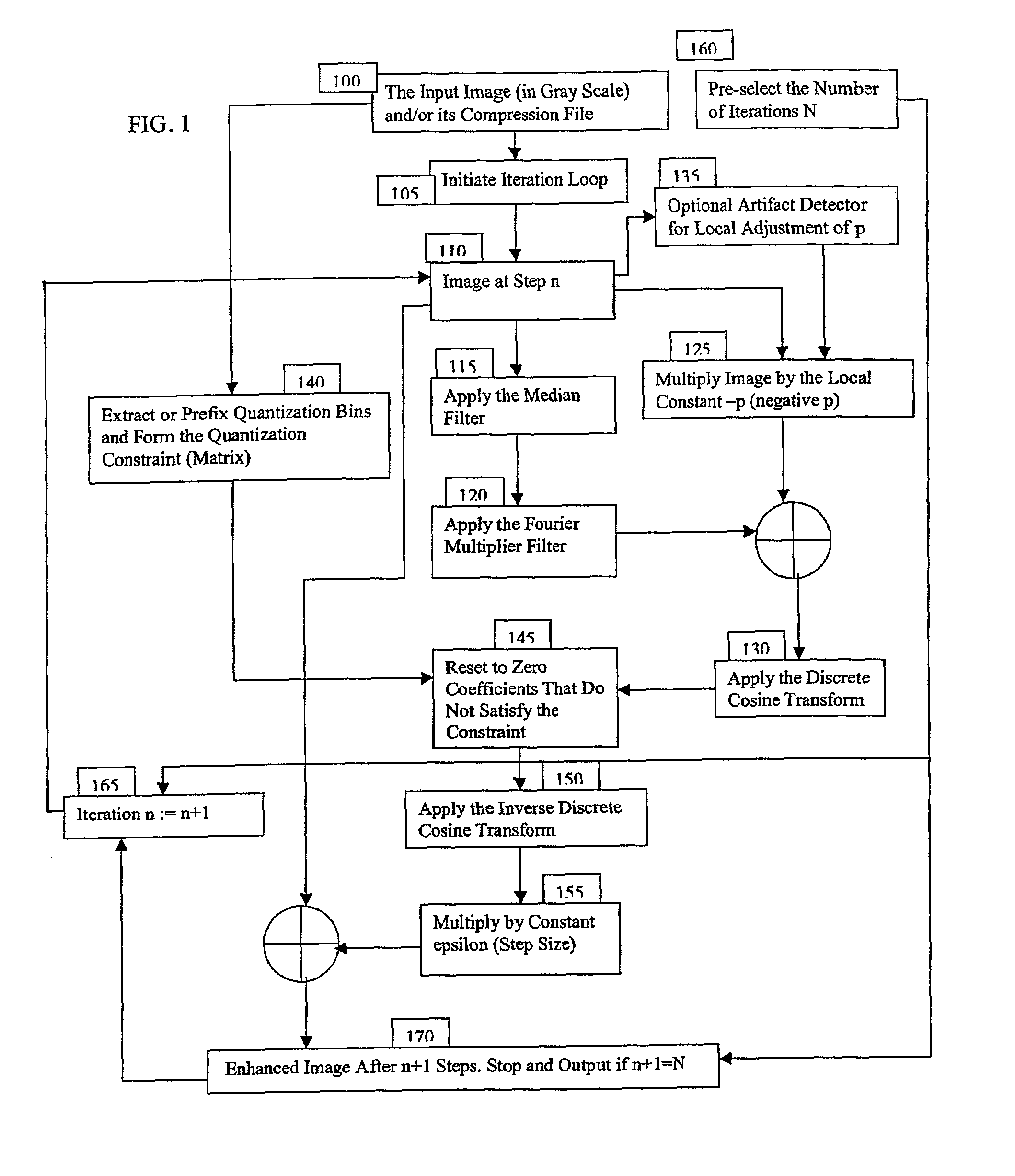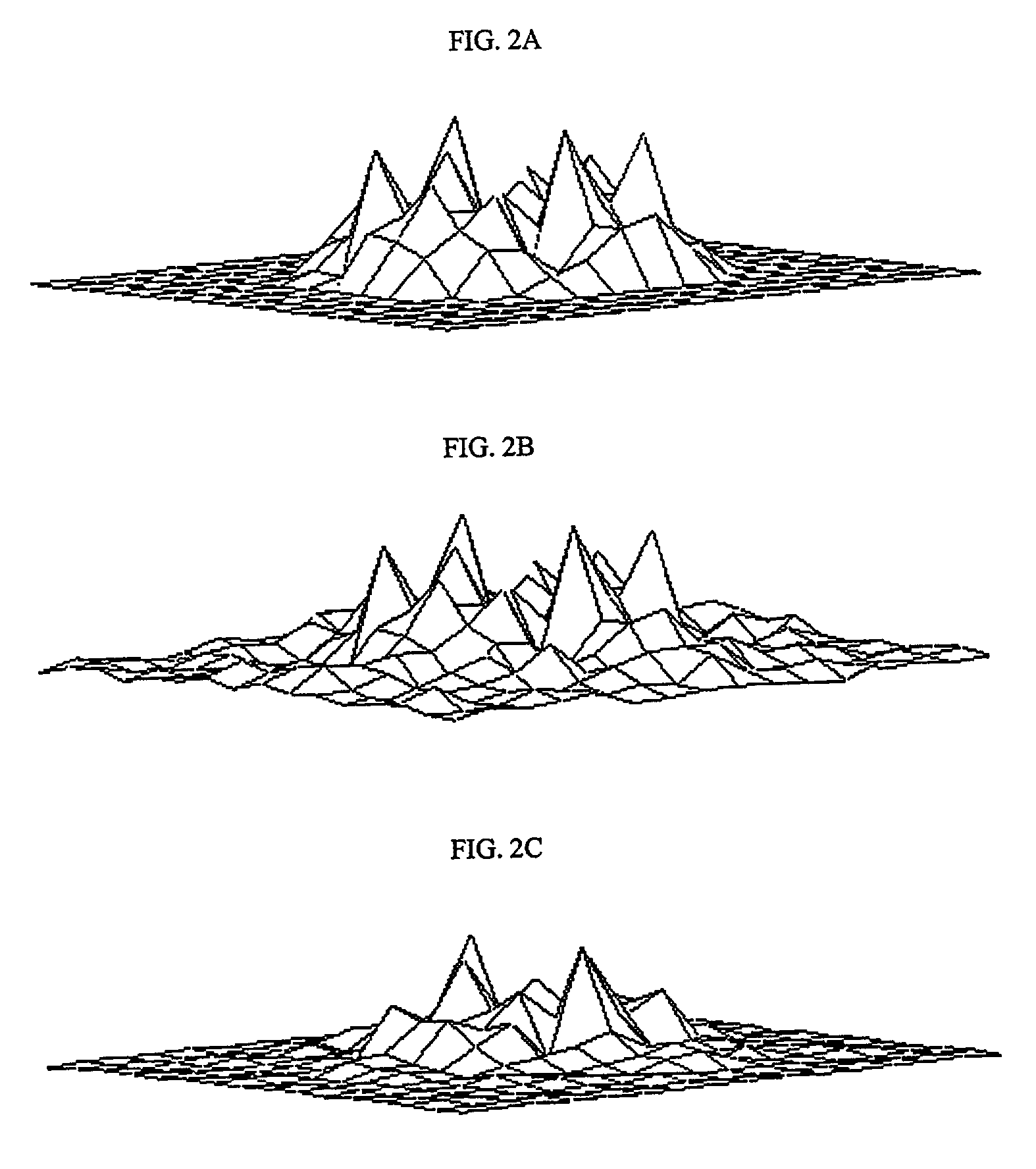Method of enhancement of the visual display of images and other visual data records
a technology of visual display and image, applied in the field of image processing, can solve the problems of reducing the visual quality of stored images by varying degrees, preventing the possibility of sharpening, and degrading the image even more, so as to enhance the representation of the digital image input, and enhance the visual quality of the newly enhanced representation of the digital imag
- Summary
- Abstract
- Description
- Claims
- Application Information
AI Technical Summary
Benefits of technology
Problems solved by technology
Method used
Image
Examples
first embodiment
[0021]the present invention is directed to the task of restoration of compressed images. While the discussion below is limited to the case of compression with classical DCT, e.g., JPEG or MPEG compression standards, it is understood that any other transforms also used in compression applications, e.g., those related to compression schemas based on Discrete Fourier Transforms, Discrete Wavelet Transforms, and the like, may alternatively be used without departing from the scope of the present invention.
[0022]The enhancement process according to the principles of the present invention includes three layers of components that reach to distinct areas of mathematical analysis and provide different engineering level functions. These three layers of essential components comprise:[0023]Layer 1) a filtered-median flow;[0024]Layer 2) functional tools in the form of DCT based filters; and[0025]Layer 3) a set of infinitesimal-scale geometric control mechanisms.
[0026]Referring to FIG. 1, a flowch...
second embodiment
[0058]A second embodiment according to the principles of the present invention is directed to enhancing an image having every second row missing or removed. For simplicity, the method is presented below in the gray-scale image version. However, the method may be extended to the enhancement of color images. Accordingly, the same method may be applied to each of the components of any vector representation of such an image. The flowchart for the process of the second embodiment is presented in FIG. 4.
[0059]Generally referring to FIG. 4, at step 200, an input image having every second row set to zero is obtained and entered into an iteration loop 205 of an enhancement process, containing a predetermined number of iterations N (see step 260). Accordingly, image information of the image input at the nth step, where n is an integer from 1, 2, 3, . . . N, is filtered using a local median type filter (step 215) and enhanced with a Fourier Multiplier filter (step 220).
[0060]Following the Four...
PUM
 Login to View More
Login to View More Abstract
Description
Claims
Application Information
 Login to View More
Login to View More - R&D
- Intellectual Property
- Life Sciences
- Materials
- Tech Scout
- Unparalleled Data Quality
- Higher Quality Content
- 60% Fewer Hallucinations
Browse by: Latest US Patents, China's latest patents, Technical Efficacy Thesaurus, Application Domain, Technology Topic, Popular Technical Reports.
© 2025 PatSnap. All rights reserved.Legal|Privacy policy|Modern Slavery Act Transparency Statement|Sitemap|About US| Contact US: help@patsnap.com



